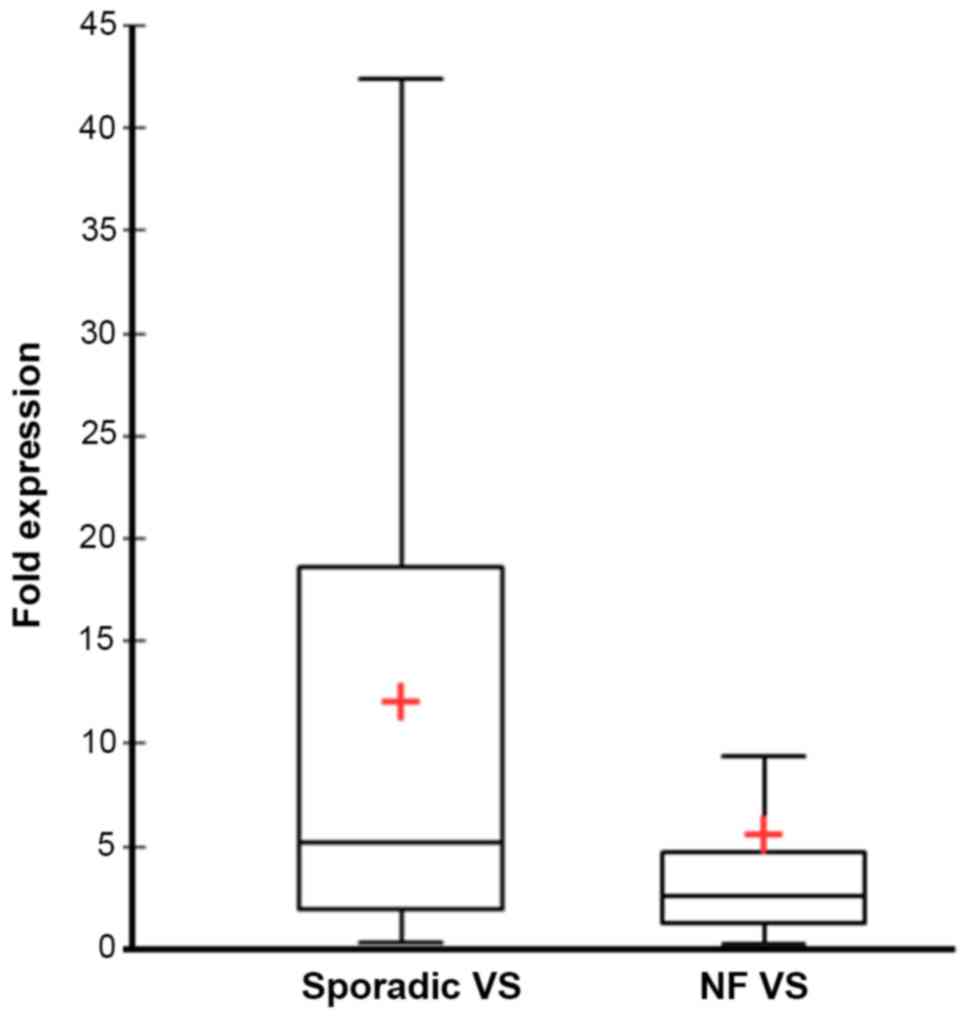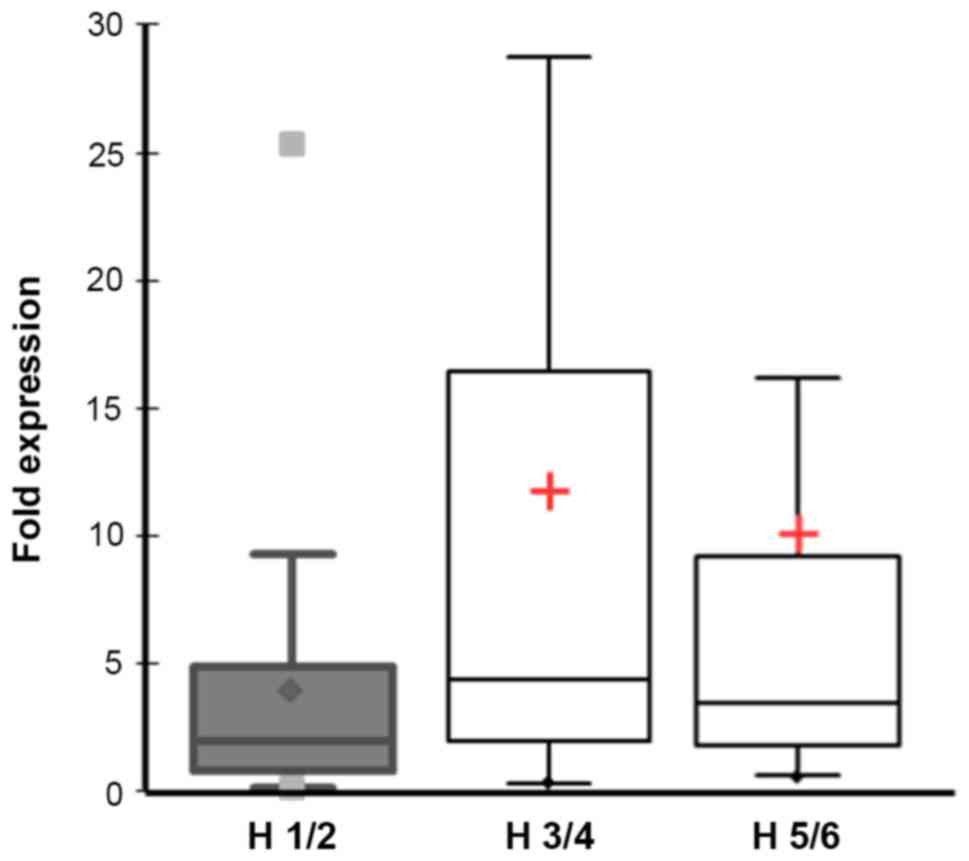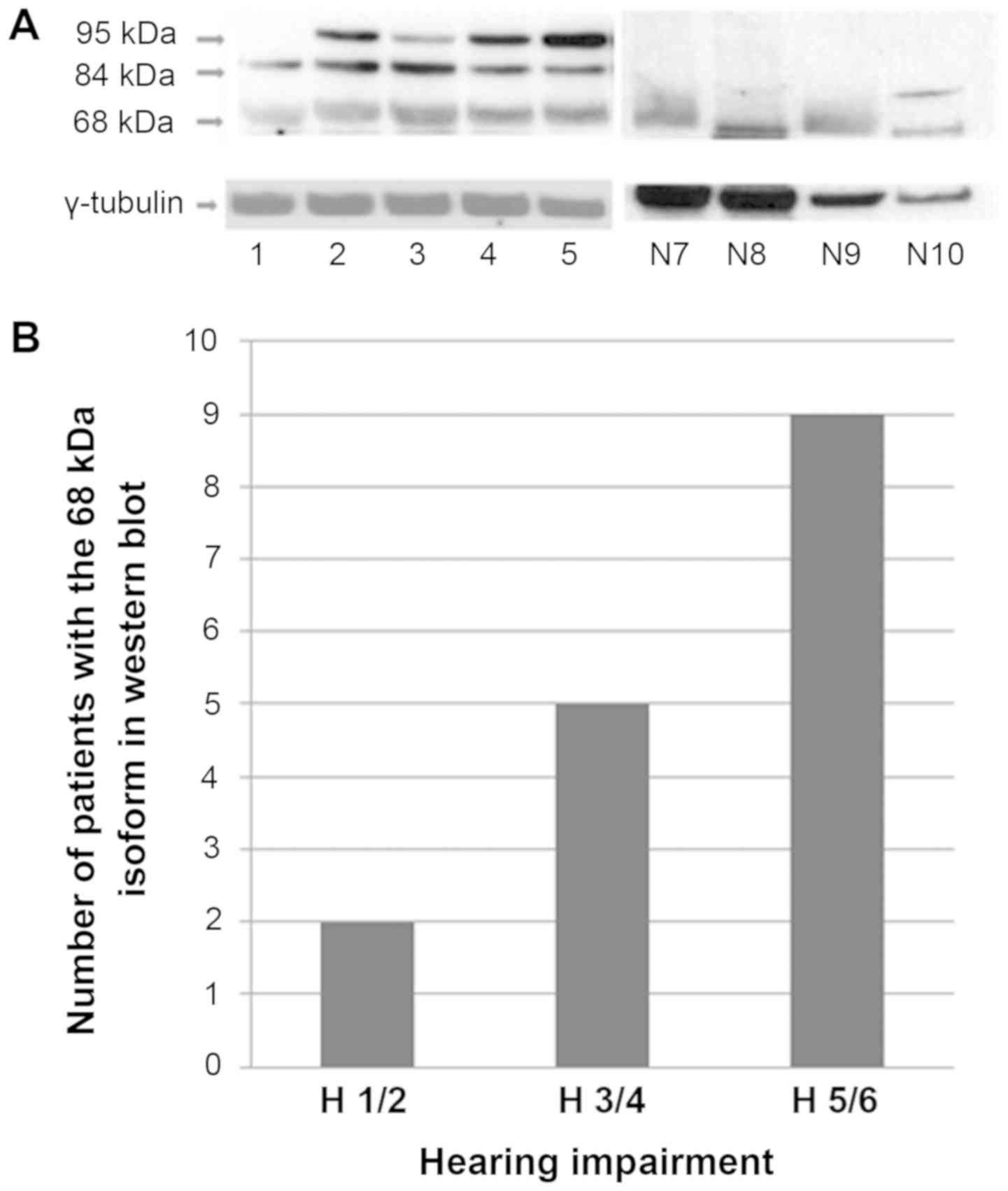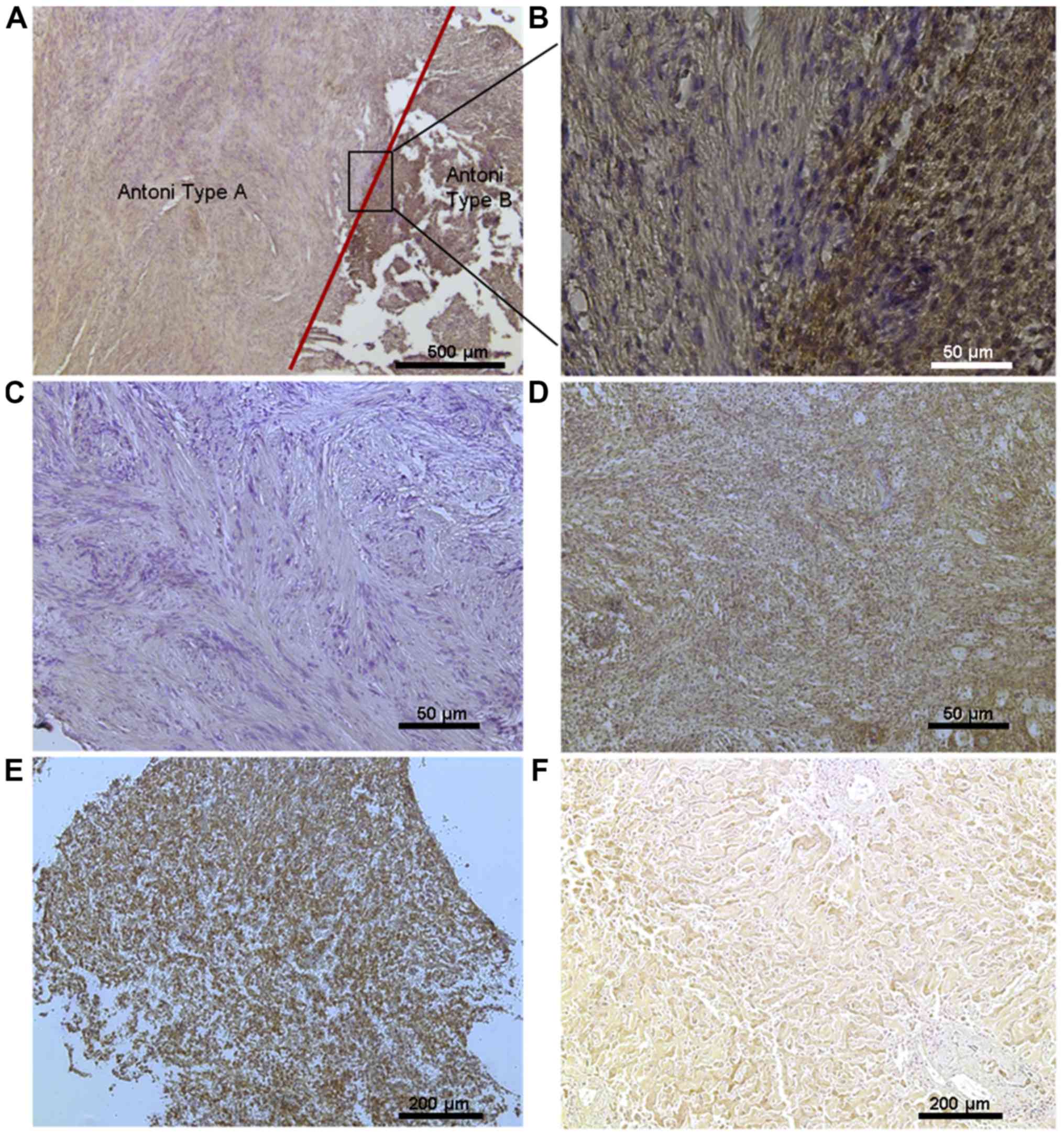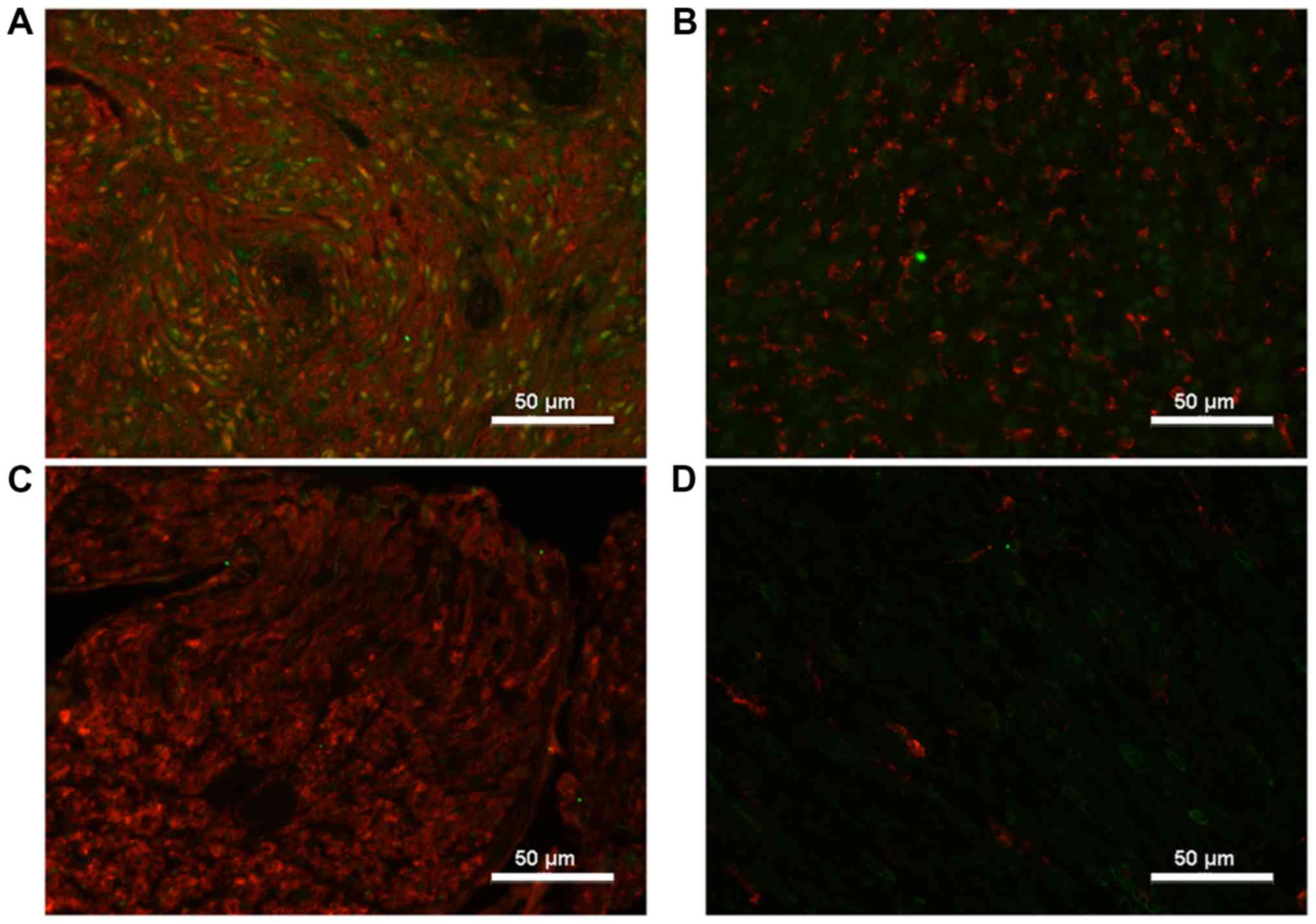|
1
|
Stemmer-Rachamimov AO, Louis DN,
Gunnlaugur PN, Antonescu CR, Borowsky AD, Bronson RT, Burns DK,
Cervera P, McLaughlin ME, Reifenberger G, et al: Comparative
pathology of nerve sheath tumors in mouse models and humans. Cancer
Res. 64:3718–3724. 2004. View Article : Google Scholar : PubMed/NCBI
|
|
2
|
Louis DN, Ohgaki H, Wiestler OD and
Cavenee WK: WHO Classification of tumours of the central nervous
system. WHO/IARC Classification of tumours, 4th edition revised.
1:2016.
|
|
3
|
Lim SH, Ardern-Holmes S, McCowage G and de
Souza P: Systemic therapy in neurofibromatosis type 2. Cancer Treat
Rev. 40:857–861. 2014. View Article : Google Scholar : PubMed/NCBI
|
|
4
|
Hanemann CO: Magic but treatable? Tumours
due to loss of merlin. Bain. 131:606–615. 2008.
|
|
5
|
Hexter A, Jones A, Joe H, Heap L, Smith
MJ, Wallace AJ, Halliday D, Parry A, Taylor A, Raymond L, et al:
Clinical and molecular predictors of mortality in neurofibromatosis
2: A UK national analysis of 1192 patients. J Med Genet.
52:699–705. 2015. View Article : Google Scholar : PubMed/NCBI
|
|
6
|
Cooper J and Giancotti FG: Molecular
insights into NF2/Merlin tumor suppressor function. FEBS Lett.
588:2743–2752. 2014. View Article : Google Scholar : PubMed/NCBI
|
|
7
|
Asthagiri AR, Parry DM, Butman JA, Kim HJ,
Tsilou ET, Zhuang Z and Lonser RR: Neurofibromatosis type 2.
Lancet. 373:1974–1986. 2009. View Article : Google Scholar : PubMed/NCBI
|
|
8
|
Schulz A, Zoch A and Morrison H: A
neuronal function of the tumor suppressor protein merlin. Acta
Neuropathol Commun. 2:822014. View Article : Google Scholar : PubMed/NCBI
|
|
9
|
Schulz A, Büttner R, Hagel C, Baader SL,
Kluwe L, Salamon J, Mautner VF, Mindos T, Parkinson DB, Gehlhausen
JR, et al: The importance of nerve microenvironment for schwannoma
development. Acta Neuropathol. 132:289–307. 2016. View Article : Google Scholar : PubMed/NCBI
|
|
10
|
Duffy MJ, McKiernan E, O´Donovan N and
McGowan PM: Role of ADAMs in cancer formation and progression. Clin
cancer Res. 15:1140–1144. 2009. View Article : Google Scholar : PubMed/NCBI
|
|
11
|
Klein T and Bischoff R: Active
metalloproteases of the A disintegrin and metalloprotease (ADAM)
family: Biological function and structure. J Proteome Res.
10:17–33. 2011. View Article : Google Scholar : PubMed/NCBI
|
|
12
|
Weskamp G, Kratzschmar J, Reid MS and
Blobel CP: MDC9, a widely expressed cellular disintegrin containing
cytoplasmic SH3 ligand domains. J Cell Biol. 132:717–726. 1996.
View Article : Google Scholar : PubMed/NCBI
|
|
13
|
McKie N, Dallas DJ, Edwards T, Apperley
JF, Russell RG and Croucher PI: Cloning of a novel membrane-linked
metalloproteinase from human myeloma cells. Biochem J. 318:459–462.
1996. View Article : Google Scholar : PubMed/NCBI
|
|
14
|
Mochizuki S and Okada Y: ADAMs in cancer
cell proliferation and progression. Cancer Sci. 98:621–628. 2007.
View Article : Google Scholar : PubMed/NCBI
|
|
15
|
Fan X, Wang Y, Zhang C, Liu L, Yang S,
Wang Y, Xing L, Qian Z, Fang S, Qiao H and Jiang T: ADAM9
expression is associated with glioma tumor grade and histological
type, and acts as a prognostic factor in lower-grade gliomas. Int J
Mol Sci. 17(pii): E12762016. View Article : Google Scholar : PubMed/NCBI
|
|
16
|
Huang CF, Yang SF, Chiou HL, Hsu WH, Hsu
JC, Liu CJ and Hsieh YH: Licochalcone A inhibits the invasive
potential of human glioma cells by targeting the MEK/ERK and ADAM9
signaling pathways. Food Funct. 9:6196–6204. 2018. View Article : Google Scholar : PubMed/NCBI
|
|
17
|
Oria VO, Lopatta P, Schmitz T, Preca BT,
Nyström A, Conrad C, Bartsch JW, Kulemann B, Hoeppner J, Maurer J,
et al: ADAM9 contributes to vascular invasion in pancreatic ductal
adenocarcinoma. Mol Oncol. 13:456–479. 2019. View Article : Google Scholar : PubMed/NCBI
|
|
18
|
Mazzocca A, Coppari R, De Franco R, Cho
JY, Libermann TA, Pinzani M and Toker A: A secreted form of ADAM9
promotes carcinoma invasion through tumor-stromal interactions.
Cancer Res. 65:4728–4738. 2005. View Article : Google Scholar : PubMed/NCBI
|
|
19
|
Fry JL and Toker A: Secreted and
membrane-bound isoforms of protease ADAM9 have opposing effects on
breast cancer cell migration. Cancer Res. 70:8187–8198. 2010.
View Article : Google Scholar : PubMed/NCBI
|
|
20
|
Qian LW, Mizumoto K, Urashima T, Nagai E,
Maehara N, Sato N, Nakajima M and Tamaka M: Radiation-induced
increase in invasive potential of human pancreatic cancer cells and
its blockade by a matrix metalloproteinase inhibitor, CGS27023.
Clin Cancer Res. 8:1223–1227. 2002.PubMed/NCBI
|
|
21
|
Mongaret C, Alexandre J, Thomas-Schoemann
A, Bermudez E, Chéreau C, Nicco C, Goldwasser F, Weill B, Batteux F
and Lemare F: Tumor invasion induced by oxidative stress is
dependent on membrane ADAM 9 protein and its secreted form. Int J
Cancer. 129:791–798. 2011. View Article : Google Scholar : PubMed/NCBI
|
|
22
|
Shigemura K, Sung SY, Kubo H, Arnold RS,
Fujisawa M, Gotoh A, Zhau HE and Chung LW: Reactive oxygen species
mediate androgen receptor- and serum starvation-elicited downstream
signaling of ADAM9 expression in human prostate cancer cells.
Prostate. 67:722–731. 2007. View Article : Google Scholar : PubMed/NCBI
|
|
23
|
Breun M, Schwerdtfeger A, Martellotta DD,
Kessler AF, Perez JM, Monoranu CM, Ernestus RI, Matthies C, Löhr M
and Hagemann C: CXCR4: A new player in vestibular schwannoma
pathogenesis. Oncotarget. 9:9940–9950. 2018. View Article : Google Scholar : PubMed/NCBI
|
|
24
|
Hsia HE, Tüshaus J, Brummer T, Zheng Y,
Scilabra SD and Lichtenthaler SF: Functions of ‘A disintegrin and
metalloproteases (ADAMs)’ in the mammalian nervous system. Cell Mol
Life Sci. 76:3055–3081. 2019. View Article : Google Scholar : PubMed/NCBI
|
|
25
|
Wippold FJ II, Lubner M, Perrin RJ, Lämmle
M and Perry A: Neuropathology for the neuroradiologist: Antoni A
and Antoni B tissue patterns. AJNR Am J Neuroradiol. 28:1633–1638.
2007. View Article : Google Scholar : PubMed/NCBI
|
|
26
|
Samii M and Matthies C: Management of 1000
vestibular schwannomas (acoustic neuromas): Hearing function in
1000 tumor resections. Neurosurgery. 40:248–262. 1997. View Article : Google Scholar : PubMed/NCBI
|
|
27
|
Hummel M, Perez J, Hagen R, Gelbrich G,
Ernestus RI and Matthies C: When does hearing loss occur in
vestibular schwannoma surgery? Importance of auditory brainstem
response changes in early postoperative phase. World Neurosurg.
95:91–98. 2016. View Article : Google Scholar : PubMed/NCBI
|
|
28
|
Moffat DA, Kasbekar A, Axon PR and Lloyd
SK: Growth characteristics of vestibular schwannoma. Otol Neurotol.
33:1053–1058. 2012.PubMed/NCBI
|
|
29
|
Sughrue ME, Kane AJ, Kaur R, Barry JJ,
Rutkowski MJ, Pitts LH, Cheung SW and Parsa AT: A prospective study
of hearing preservation in untreated vestibular schwannomas. J
Neurosurg. 114:381–385. 2011. View Article : Google Scholar : PubMed/NCBI
|
|
30
|
Livak KJ and Schmittgen TD: Analysis of
relative gene expression data using real-time quantitative PCR and
the 2(-Delta Delta C(T)) method. Methods. 25:402–408. 2001.
View Article : Google Scholar : PubMed/NCBI
|
|
31
|
Oria VO, Lopatta P and Schilling O: The
pleiotropic role of ADAM9 in the biology of solid tumors. Cell Mol
Life Sci. 75:2291–2301. 2018. View Article : Google Scholar : PubMed/NCBI
|
|
32
|
Heit B, Tavener S, Raharjo E and Kubes P:
An intracellular signaling hierarchy determines direction of
migration in opposing chemotactic gradients. J Cell Biol.
159:91–102. 2002. View Article : Google Scholar : PubMed/NCBI
|
|
33
|
Amendola RS, Martin AC, Selistre-de-Araújo
HS, Paula-Neto HA, Saldanha-Gama R and Barja-Fidalgo C: ADAM9
disintegrin domain activates human neutrophils through an autocrine
circuit involving integrins and CXCR2. J Leukoc Biol. 97:951–962.
2015. View Article : Google Scholar : PubMed/NCBI
|
|
34
|
Gong L, Cumpian AM, Caetano MS, Ochoa CE,
De la Garza MM, Lapid DJ, Mirabolfathinejad SG, Dickey BF, Zhou Q
and Moghaddam SJ: Promoting effect of neutrophils on lung
tumorigenesis is mediated by CXCR2 and neutrophil elastase. Mol
Cancer. 12:1542013. View Article : Google Scholar : PubMed/NCBI
|















